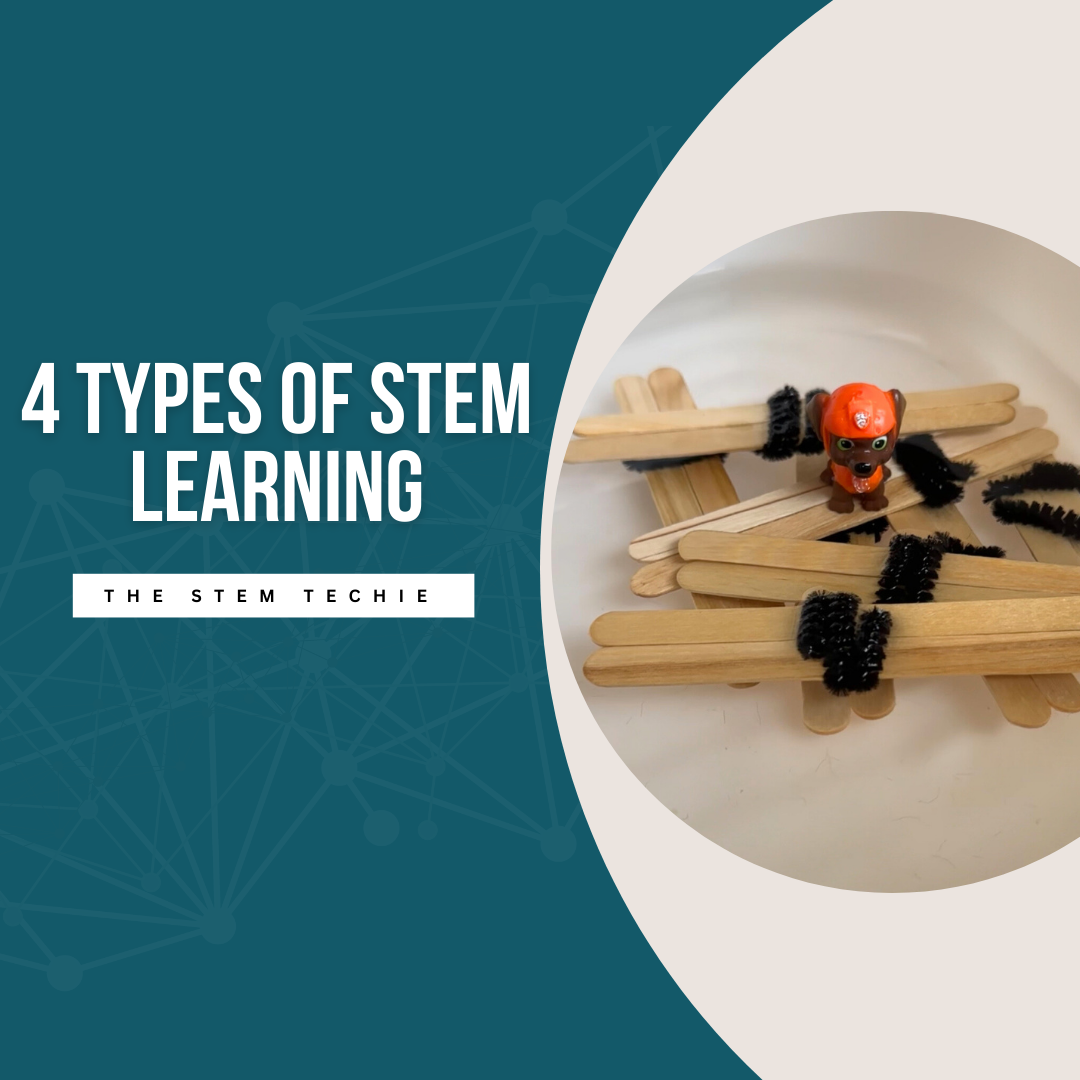Imagine this: I was a classroom teacher who was really excited about bringing STEM (science, technology, engineering, and math) into my classroom. I pictured hands-on fun where kids were learning these subjects without even realizing it. But then I started digging into online resources and realized… whoa, there’s a whole world of STEM out there! I saw people doing all sorts of different activities and calling them STEM education. It got me thinking, ‘What exactly is STEM education? Is it about STEM bins? STEM projects? STEM activities? Or maybe those Engineering Design challenges?’
What is STEM Education?
To kick things off, let’s clarify what STEM education really is. You may have heard of the term before but might still be wondering about its true meaning. STEM stands for science, technology, engineering, and math, and it’s an educational approach that can integrate these subjects to foster innovation and critical thinking. The beauty of STEM learning is that it’s adaptable—it can range from simple experiments for elementary students to complex challenges designed. Did you know that STEM isn’t limited to one rigid definition? It evolves depending on how these subjects are combined and applied.
In real-world settings, these STEM principles come to life in incredible ways. Engineers combine math and science to design safer bridges, while scientists rely on advanced technology to gather climate data. By seeing these principles in action, students gain a sense of STEM’s impact beyond the classroom and connect their learning to real-world challenges.
STEM learning doesn’t just deepen content knowledge—it also builds essential skills like critical thinking, creativity, and collaboration, which are key for 21st-century careers. Research shows that these skills help students adapt to a rapidly changing world, a context that resonates with educators and parents striving to prepare kids for an unpredictable future.
So, whether your child is using a robot to solve a math problem or building a bridge out of popsicle sticks, it all falls under the STEM umbrella. Here’s a deep dive into the different types of STEM learning opportunities that every parent and teacher should explore.
S.T.E.M.: Learning the Core Subjects Through Hands-On Activities
When most people think about STEM education, the first thing that comes to mind is kids engaging in hands-on experiences that focus on the individual subjects of science, technology, engineering, and math. These are classic experiments or projects, like building volcanoes in science class or coding simple programs in technology.
Why it Matters: The goal here is to give kids practical exposure to STEM concepts in isolation so they can understand each subject before diving into more complex integrations. For example, a science experiment, like mixing baking soda and vinegar, teaches children about chemical reactions in a way that’s easy to grasp.
Integrated STEM: Blending Two or More Subjects for a Deeper Experience
Here’s where things get really interesting—integrated STEM combines two or more subjects to create more meaningful learning experiences. Imagine using a robot (technology) to help solve math problems or designing a science experiment that requires engineering a structure to gather data.
Why it Matters: This approach shows kids that STEM fields aren’t isolated. In the real world, science, technology, engineering, and math work together to solve complex problems. This method encourages teamwork and interdisciplinary thinking, helping students connect the dots between what they learn in the classroom and how it applies in everyday life.

The Engineering Design: Structured Problem-Solving at Its Best
STEM activities that involve the Engineering Design Process teach kids to approach challenges in a structured way: they define a problem, imagine potential solutions, plan and build a prototype, and test their results. This process is often used in engineering and technology projects but can be applied to any STEM challenge.
Why it Matters: This step-by-step problem-solving method helps children develop resilience and persistence. They learn that failure is a part of the process, and each failure brings them closer to success. It’s a powerful lesson in innovation and critical thinking.
STEM Engineering Design: Combining Math and Science to Solve Real-World Problems
This type of STEM learning takes things up a notch by using math and science to solve real-world problems through the Engineering Design Process. Think of it as applied STEM—students use what they’ve learned in math and science to create practical solutions.
Why it Matters: STEM Engineering Design builds on students’ understanding of individual subjects but challenges them to apply that knowledge to complex, often open-ended problems. Whether they’re designing a sustainable house or building a roller coaster prototype, kids get to see how STEM can impact the world around them.
Unlocking the Power of STEM Learning
The benefits are clear no matter how you approach STEM education—whether through individual subject-focused activities, integrated projects, or the Engineering Design Process. STEM learning helps kids develop critical thinking, creativity, and problem-solving skills that will serve them throughout their lives. It’s not about getting the “right” answer every time but learning how to approach and work through problems with resilience and curiosity.
The best part? You don’t have to figure it out alone! Join our free community, where you’ll find tons of STEM ideas for elementary students, along with resources to support parents, teachers, and anyone who wants to bring the magic of STEM into their world. Together, we can inspire the next generation of scientists, engineers, and innovators!
-Dr Amy

